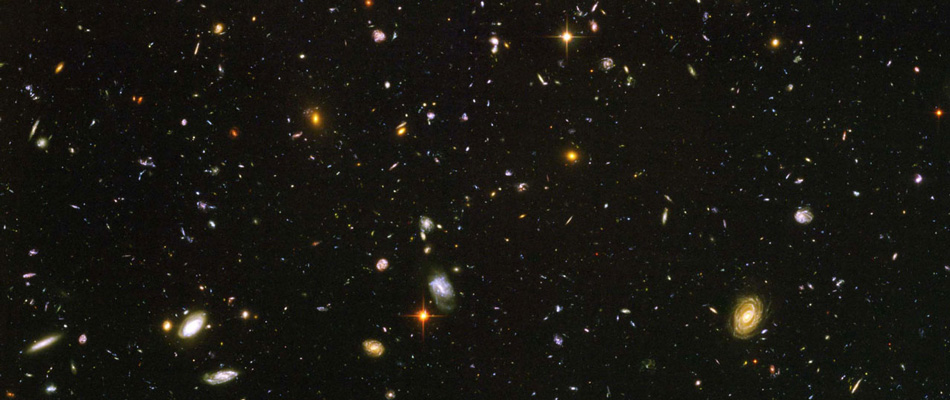
The goals of nuclear astrophysics are understanding the energy generation in stars in all stages of stellar evolution and explaining the abundances of the elements and their isotopes as we observe them in nature. These aims are closely related since nuclear processes have been identified as the enormous energy source which stabilizes the stars and governs their evolution by transmuting nuclear species into other nuclear species thus simultaneously creating new elements.
Investigations during the last century have shown that we are connected to distant space and time not only by our imagination but also through a common cosmic heritage: the chemical elements that make up our bodies. These elements and their isotopes were created by nuclear fusion reactions in the hot interiors of remote and long-vanished stars over many billions of years. Their nuclear fuels finally spent, these giant stars met death in cataclysmic explosions, called supernovae (SN), scattering afar the atoms of heavy elements synthesized deep within their cores. Eventually this material, as well as material lost by smaller stars during the red-giant stages, collected into clouds of gas in interstellar space. These, in turn, slowly collapsed giving birth to new generations of stars, thus leading to a cycle of evolution that is still going on. In this scenario, the Sun and its complement of planets were formed some 5 billion years ago. The detailed understanding of the origin of the chemical elements combines astrophysics and nuclear physics, and forms what is called nuclear astrophysics.
Stars are powered by thermonuclear fusion reactions that convert protons into heavier chemical elements from He to Fe. The energy from these reactions amounts for the energy radiated from the stellar surface as well as the flux of stellar neutrinos.
Thermonuclear fusion reactions are at the heart of nuclear astrophysics. They sensitively influence the nucleosynthesis of the elements in the earliest stages of the universe and in all the objects formed thereafter, and control the associated energy generation, neutrino luminosity, and evolution of stars. A good knowledge of the rates of these reactions is thus essential for understanding the broad picture of stellar evolution. Nuclear astrophysics has entered a period characterized by unprecedented demands for new information and for improved accuracy. This challenge is being driven by the quality and breadth of current observational data, a direct consequence of impressive advances in observational technology. The extraordinary results provided by the satellite telescopes INTEGRAL and HUBBLE or the precise maps of the cosmic microwave background background provided by PLANCK are just some examples.
Observations of elemental and isotopic abundances are very useful probes of stellar structure and evolution. In some cases, these abundances depend sensitively on the state of the stellar interior and, provided that the relevant nuclear information exists, they allow us to construct detailed models of stars. At other times, the observed abundance falls entirely outside the predictions of stellar models and requires new ideas before being incorporated into the general framework of nucleosynthesis. However, measurements of astrophysically-interesting reactions are complicated by the fact that reaction rates at stellar temperatures are almost vanishingly small.
Moreover, low energy studies of thermonuclear reactions in a laboratory at the earth’s surface are hampered by background effects of cosmic rays in the detectors, for that the best solution is to install the dedicated accelerator facility in a deep underground laboratory, where the rock shield against cosmic rays.


